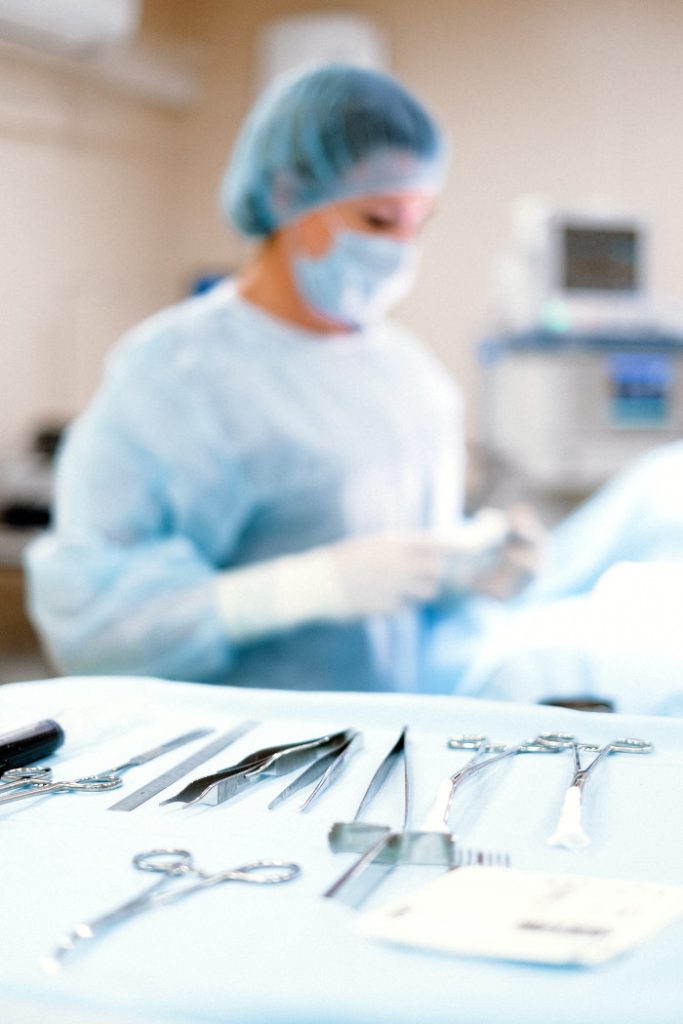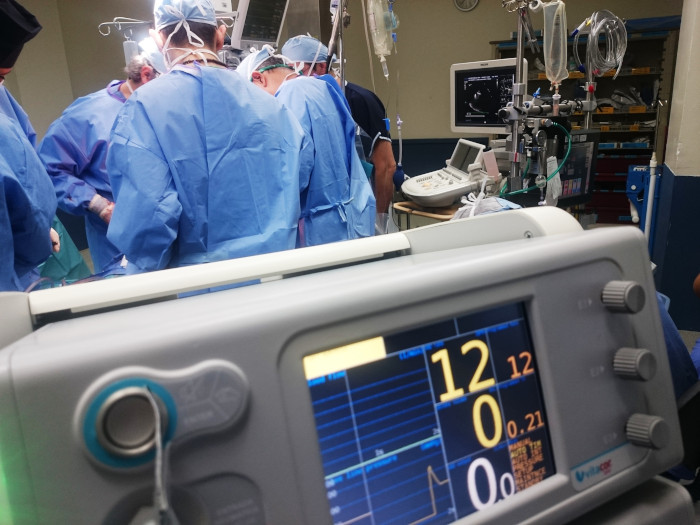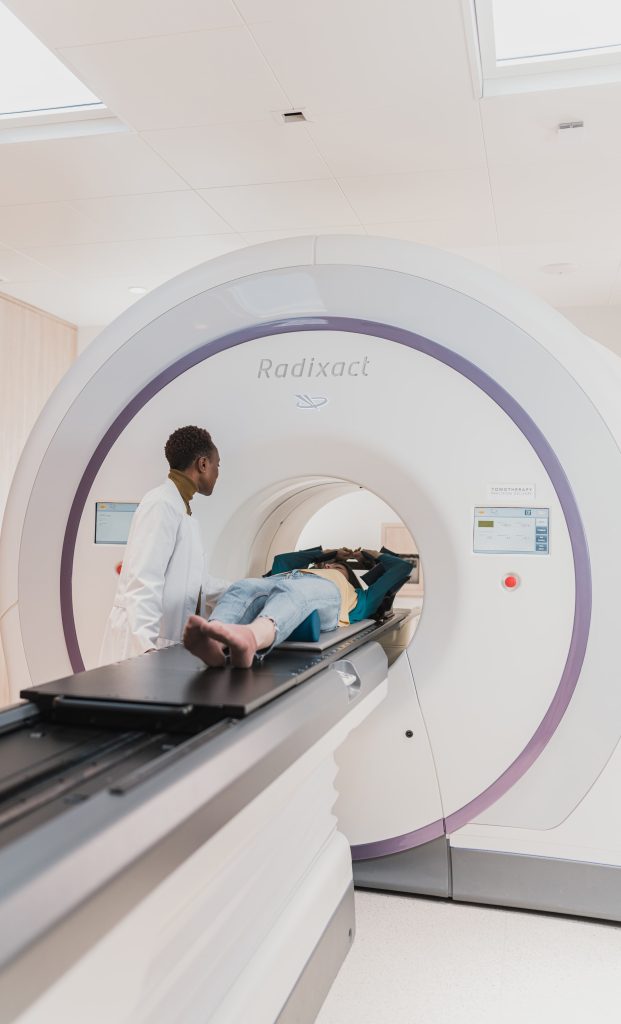Gallblader and Bile Duct Surgery
Gallstones
Gallstones Q & A
Gallstones (cholelithiasis or biliary calculi) usually form in the gallbladder, which is a small pouch-like organ connected to the main bile ducts and situated on the underside of the liver. Gallstones form when one of the constituents of bile, usually cholesterol, becomes over concentrated and precipitates to produce stones.
Most gallstones do not cause symptoms. Sometimes they can cause pain in the abdomen, particularly after eating fatty foods (biliary colic). Rarely, they can lead to infection in the gallbladder (cholecystitis), which manifests with a fever and severe abdominal pain under the right rib cage. The pain can radiate to the shoulder blade but its location is not always specific.
Occasionally a stone migrates out of the gallbladder and into the bile duct. This may simply cause jaundice or a potentially serious infection in the bile ducts (cholangitis). A stone that settles at the lower end of the bile duct, even transiently, may cause inflammation of the pancreas (acute pancreatitis). This is another potentially serious condition.
An ultrasound of the gallbladder and liver (a painless scan) and some blood tests are usually necessary to make the diagnosis. Occasionally, other tests may be needed to rule out other conditions. These tests include an endoscopy of the stomach, a CT scan or an MRI scan of the abdominal organs.
The most common treatment for gallstones that cause symptoms is an operation to remove the gallbladder. This is usually done with keyhole surgery (laparoscopic cholecystectomy), a routine operation that is safe in the hands of a trained specialist surgeon.
Medicines or shockwaves can be used to break up stones. The effect of these treatments is modest and transient, since stones can recur. For this reason, surgery is recommended.
Keyhole (laparoscopic) surgery is preferred because recovery is much faster and patients can be treated as a day case or short overnight stay. However, in certain cases (<2.5%) the operation is converted to an open one because of either severe inflammation or anatomical variation.What are the potential complications of surgery?
As with most operations, there is a small risk of wound infection, bleeding or blood clots. A significant but rare complication is injury to the bile duct, which occurs in two to three people in a thousand. A bile leak can also occur after surgery, but this is also rare and is usually treated with an endoscopy and placement of a fine plastic tube (stent) in the bile duct for a few weeks.
Yes. Most patients do not notice a difference. However, some develop looser bowels, which usually return to normal within few weeks.
When should I expect to return to work?
This varies between people and depends on the nature of their work. Return to office-based work is possible as early as one week after surgery, but for those with more physically strenuous jobs a longer period of recovery is needed.


Gallblader Cancer Q & A
Gallbladder cancer is rare. It affects about 670 people per year in the UK.
Your doctor will request blood tests to check the function of the liver and check for substances in the blood that are found when a cancer is present (tumour markers).
An ultrasound scan is often the first test to be done but this is usually followed by CT and MRI scans to determine the local extent and any evidence of spread.
An ultrasound of the gallbladder and liver (a painless scan) and some blood tests are usually necessary to make the diagnosis. Occasionally, other tests may be needed to rule out other conditions. These tests include an endoscopy of the stomach, a CT scan or an MRI scan of the abdominal organs.
Gallbladder conditions such as gallstones, chronic inflammation of the gallbladder (cholecystitis), gallbladder polyps and a condition called porcelain gallbladder have been linked to the development of gallbladder cancer.
Other factors include obesity, smoking and diabetes.
Gallbladder polyps are kept under regular surveillance with serial ultrasound scans.
Polyps larger than 1cm or showing fast growth pattern need an operation to remove the gallbladder (cholecystectomy).
The only curative treatment for gallbladder cancer is surgery.
A very early cancer may be found incidentally when the gallbladder is removed for gallstone disease. If the cancer is at the earliest stage (T1a) then no further surgery is needed.
A gallbladder cancer that is found incidentally after laparoscopic cholecystectomy and is more advanced than the earliest of stages (i.e. T1b or more) requires further surgery to remove the liver tissue that is immediately next to the gallbladder and the lymph glands surrounding the blood vessels entering the liver. If it is necessary to remove the bile duct, the flow of bile is restored using a segment of small bowel. This complex procedure is usually preceded by a laparoscopy with an ultrasound examination to exclude spread of disease within the abdomen and liver.
A gallbladder cancer that causes symptoms and has been identified on a scan is often advanced. Surgery may still be possible for some patients. However, when the cancer is locally advanced or has spread, surgery is not beneficial and the focus is on relief of symptoms. Jaundice may be relieved with the use of plastic or metal tubes (stents) inserted using an endoscope or through the liver (percutaneous transhepatic cholangiography) to open up a blocked bile duct. Chemotherapy and radiotherapy may be offered but have a modest effect.
Bile Duct Cancer
(Cholangiocarcinoma)
Bile ducts are present throughout the liver and coalesce like small streams to drain bile from the right and left lobes of the liver via the right and left hepatic ducts.
These ducts, in turn, join to form one duct that drains bile into the small bowel (duodenum) after passing through the head of pancreas. The gallbladder is a pear-shaped pouch which is attached to the main bile duct by the cystic duct. Cancer of the bile duct affects about 1000 people in the UK each year. It can arise within the liver (intra-hepatic cholangiocarcinoma) or outside the liver (extra-hepatic cholangiocarcinoma).
A cancer that develops at or near the joining of the right and left hepatic ducts is called hilar cholangiocarcinoma or Klatskin tumour. A cancer that develops in the duct near its termination in the small bowel is called a distal cholangiocarcinoma.
Bile Duct Cancer Q & A
Factors associated with an increased risk of bile duct cancer include:
Inflammatory conditions of the bile ducts such as primary sclerosing cholangitis.
A developmental abnormality of the bile ducts (choledochal cysts or malformations) which is associated with recurrent infections (cholangitis).
Infection with liver flukes and formation of bile duct stones. This condition is more common in oriental populations.
Bile duct cancer can cause a blockage of the flow of bile. Other benign conditions can also block the flow of bile. This blockage manifests with yellowing of the skin (jaundice). The patient may notice darkening of the urine and the passage of pale stool. Bile salts that build up in the skin cause itching. Jaundice also causes lethargy and a loss of appetite.
If there is an infection, pain and high fever with shaking and rigors may follow. This needs emergency medical care.
Your doctor will order blood tests to check the function of the liver, clotting of the blood, and to check for substances in the blood that are found when a cancer is present (tumour markers).
Scans such as ultrasound, CT and MRI are usually required, as well as direct study of the bile duct using an endoscope for distal cholangiocarcinoma (Endoscopic Retrograde Cholangio-Pancreatography or ERCP for short), which allows biopsies as well as treating the blockage with a plastic or metal tube (stent). Hilar cholangiocarcinoma usually requires a test called PTC (Percutaneous Transhepatic Cholangiographyinsertion). This involves numbing the skin and inserting a needle through the abdomen to inject an X-ray dye into the bile ducts. This gives information about the site of blockage and allows the placement of stents or drains to relieve jaundice. In some instances a small endoscope is inserted into the bile duct to obtain biopsies (cholangioscopy).
Patients who are being considered for surgery usually require a laparoscopy. This is a procedure performed under general anaesthetic to exclude the spread of cancer within the abdomen.
Surgery is the only treatment that can offer a chance of a cure. This is offered to patients who are fit for major surgery and have localised disease. A liver resection is used to treat disease within the liver (intra-hepatic cholangiocarcinoma).
Cancers near the termination of the bile duct require a Whipple’s pancreatico-duodenectomy. Hilar cholangiocarcinomas are the most challenging to treat and may require a major liver resection with excision of the bile duct as well as the portal vein (a major blood vessel supplying the liver) and lymph glands.
The portal vein is reconnected using a graft and the bile flow is restored using a segment of small bowel. This is complex surgery and often requires detailed explanation by an expert hepatobiliary surgeon with experience in this surgery.
Yes. Choledochal cysts usually cause symptoms and the risk of cancer is significant enough for most hepatobiliary surgeons to recommend surgery. This involves removing the bile duct and using a segment of small bowel to restore the flow of bile.
